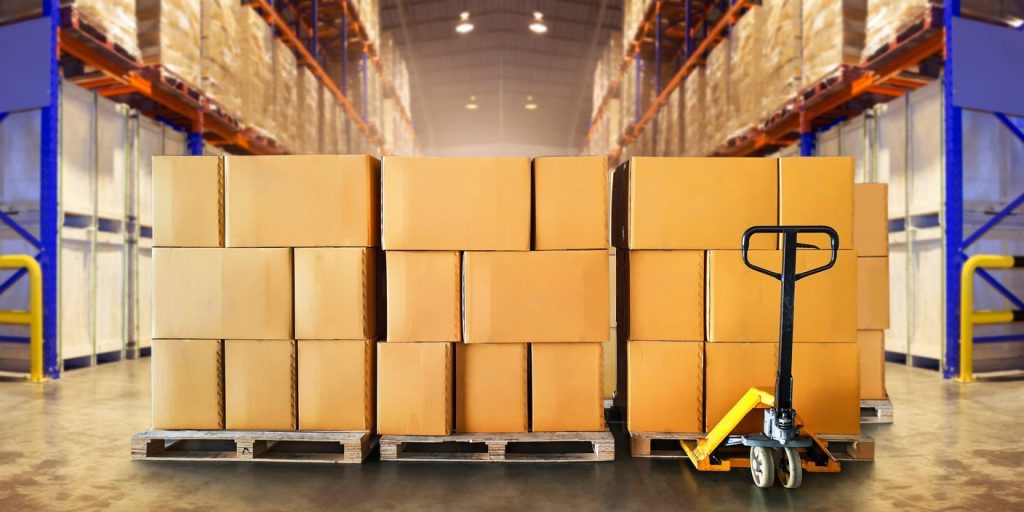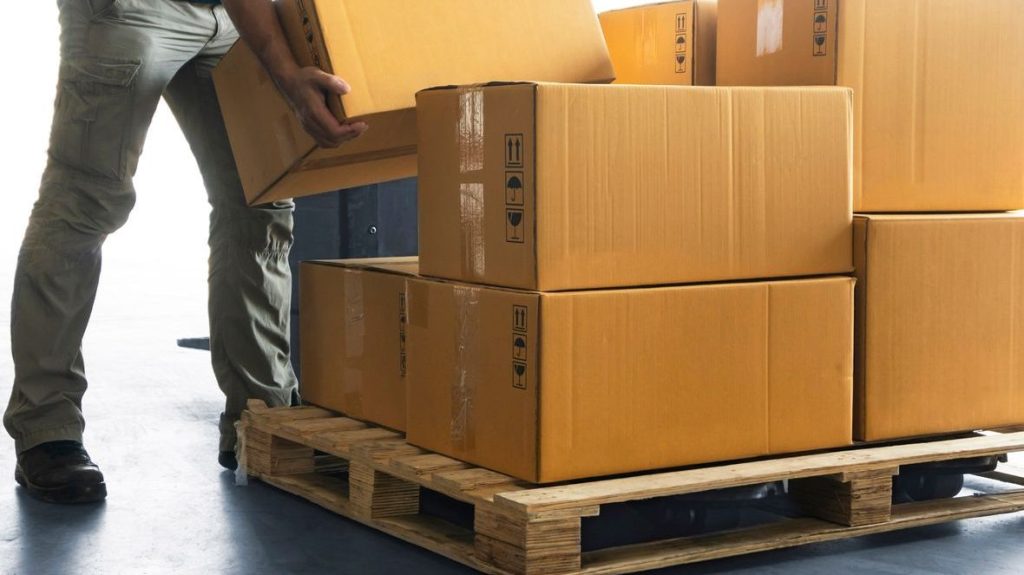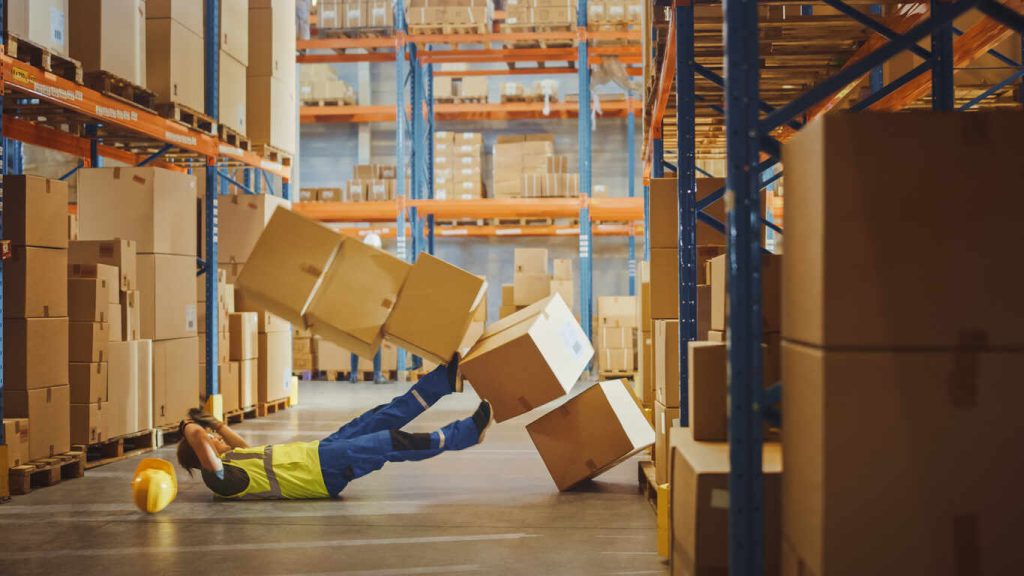Introduction to Pallet Stacking
Efficient and safe pallet stacking is a cornerstone of successful warehouse management, directly impacting operational efficiency and worker safety. The art of stacking a pallet involves more than just piling boxes; it requires a strategic approach, starting with the selection of the right pallet, understanding the types of loads, and applying proper weight distribution principles. This guide aims to walk you through each step of the process, from assessing pallet conditions to executing the perfect stack, ensuring your warehouse operations run smoothly and safely. Whether you’re new to the logistics industry or looking to refine your skills, mastering how to stack a pallet effectively is essential for anyone involved in material handling.
Selecting the Right Pallet
Assessing Pallet Condition
Before diving into the stacking process, the first step is ensuring that the pallets you intend to use are up to the task. A safe and sturdy pallet is foundational to successful stacking. Inspect each pallet for signs of wear and tear such as cracks, splinters, or broken planks. A compromised pallet not only risks the integrity of the load but can also pose significant safety hazards. It’s crucial to check for cleanliness as well, as contaminated pallets can spoil goods and create health risks.
Pallet Types and Materials
When it comes to pallets, one size does not fit all. The material of your pallet can significantly impact its suitability for your specific needs. Here’s a breakdown:
- Wooden Pallets: These are the industry standard due to their strength and affordability. However, they require regular inspections for potential hazards like nails, splinters, and rot. They’re versatile and can be repaired easily, making them a cost-effective option for many businesses.
- Plastic Pallets: Known for their durability and resistance to elements like moisture and pests, plastic pallets are ideal for industries requiring high standards of hygiene, such as food and pharmaceuticals. They’re also lighter than wood, which can reduce shipping costs, but they tend to be more expensive upfront.
- Metal Pallets: If you’re shipping heavy or high-value items, metal pallets might be your best bet. They’re the most durable option and can handle a lot of weight, but they’re also the most expensive and are typically used in specialized sectors like automotive and aerospace.
Choosing the right pallet involves considering the nature of your goods, as well as the conditions they’ll be stored and transported in. Each type of pallet has its lifecycle and environmental impact, so consider these factors when making your selection to ensure efficiency and sustainability in your supply chain.
Planning Your Pallet Stack
Understanding Load Types
The first step in planning your pallet stack is to categorize the items you intend to stack. Different types of goods require different stacking strategies. For instance, fragile items need a more secure and tighter stacking method compared to durable goods. It’s essential to understand the nature of your cargo – whether it’s perishable, fragile, heavy, or irregularly shaped – as this will significantly influence how you stack your pallets.
Weight Distribution Principles
A fundamental principle in pallet stacking is ensuring that weight is evenly distributed across the pallet. This prevents the stack from becoming top-heavy and unstable, which could lead to accidents. The heaviest items should be placed at the bottom of the stack, with lighter items on top. This creates a stable base and lowers the center of gravity, reducing the risk of the stack tipping over.

Stacking Patterns and Their Benefits
There are primarily two stacking patterns: columnar and interlocked.
- Columnar stacking involves placing boxes directly on top of each other with their edges aligned. This pattern is suitable for uniform, box-shaped items and provides excellent vertical strength. However, it may not be the most stable arrangement for transport as it can be prone to tipping.
- Interlocked stacking, on the other hand, involves alternating the direction of each layer to create a more stable structure. This pattern is more secure during transport as it prevents the boxes from sliding. However, it can reduce the compressive strength of the boxes, making it less suitable for very heavy items.
Choosing the right stacking pattern depends on the type of goods you’re handling and their transport and storage conditions. Each pattern has its benefits and choosing the correct one can significantly impact the safety and efficiency of your pallet stacking.
Executing the Perfect Stack
Layer by Layer Approach
Building a stable and secure pallet begins with the base layer. Start with the heaviest and sturdiest items to create a solid foundation. Each layer should be planned to distribute weight evenly, avoiding gaps that could lead to instability. As you build up, ensure that each layer is complete and stable before adding the next. This methodical approach helps maintain the stack’s integrity and prevents shifting during transport.
Securing Your Load
Once your pallet is stacked, securing the load is crucial for safe transport. Strapping, also known as banding, can be used to bind items together, adding strength to the stack. Wrapping the pallet with stretch film is another essential step; it holds the items in place and protects them from dust, moisture, and other environmental factors. Ensure the wrap is tight and covers the entire load, including the base, to prevent any movement.
Safety Checks and Balancing
Before moving the pallet, perform a final inspection to ensure everything is in order. Check that the stack is not leaning and that there are no loose items. The load should be balanced, with no overhanging edges that could catch on equipment or structures. This final check is not just about ensuring the safety of the goods but also the safety of the workers handling the pallet.
By following these steps, you can execute a perfect stack that is safe for storage and transport. This process, while time-consuming, is essential for maintaining the integrity of your goods and ensuring the safety of your warehouse operations.
Conclusion: Elevating Your Stacking Strategy
Mastering the art of pallet stacking is not just about organizing goods for transport; it’s about ensuring the safety, efficiency, and productivity of your warehouse operations. The principles and practices outlined in this guide are designed to help you build a more secure, stable, and efficient stack, whether you’re dealing with fragile items, heavy loads, or a mix of goods.
Remember, the key to successful pallet stacking is attention to detail. From selecting the right pallet to executing the perfect stack, each step requires careful consideration and adherence to best practices. Regular training and reminders for your team can help maintain high standards and prevent common stacking errors.
Finally, continuous improvement should be your goal. As you apply these strategies, take note of what works best for your specific operations and where there might be room for improvement. Encourage feedback from your team, and be open to adapting your approach based on their experiences and the unique challenges of your warehouse.
By elevating your stacking strategy, you’re not just stacking pallets; you’re building a safer, more efficient, and more productive warehouse environment.




I do believe all the ideas you’ve presented for your post. They are really convincing and will certainly work. Nonetheless, the posts are too short for novices. May just you please lengthen them a little from subsequent time? Thanks for the post.
Great news for all us
[b]Make modern[/b] pills to vast culminations – greater as extra strong ecstasies!
[b]not witnessed[/b] before – exceptionally newest inside medical research study!
[b]Completely protected[/b] as powerful – as boosted drive also truly increased penile strength!
[url=https://psee.io/7qlgd7][b]Boost capacity with own releases promptly right now![/b][/url]
Innovative novel pills for mind-blowing peaks – greater along with increasingly strong sensations!
Trailblazing development – modern advancements through health science!
Entirely harmless and very potent – boosts sex drive plus boosts male hardness!
[url=https://psee.io/7qlgd7][b]Increase personal climax load today![/b][/url]
[b]Full Throttle Summer Savings Event![/b]
[b]But are Score discounts[/b] – on swag and from [b]DJI[/b], [b]GEPRC[/b], [b]RadioMaster[/b], [b]Ethix[/b], [b]TBS[/b], [b]Lumenier[/b], [b]Flywoo[/b], [b]EMAX[/b] and around now gone!
[url=https://psee.io/7zu6yq][b]GetFPV’s Full Throttle Summer Savings event is on![/b][/url]
[url=https://psee.io/82nbtf][img]https://tripacostarica.com/1/tr/4.png[/img][/url]
[u][b]Budget[/b][/u] getaway nearby toward dwelling!
[u][b]Balmy[/b][/u] strands, calm ocean, plus brine!
[u][b]Cheap fees![/b][/u]
Entire that will render your beach [b][u]vacation eternal![/u][/b]
[url=https://psee.io/82nbtf][b]Book your voucher to bliss right now![/b][/url]
[b]We’re here to rescue the problem[/b] — a professional team set to resolve your plumbing disaster and reinstate order in your house!
[b]Our prompt action aids in[/b] – lower the necessity for expensive major restorations later.
[b][url=https://psee.io/7ygm8w][u]Discover our prompt and outstanding[/u] care – at once![/b][/url]
[u][b]Water Damage Mitigation Service[/b][/u] targets in assisting residents swiftly handling moisture-connected issues.
[b][u]Service’s principal purpose[/u][/b] becomes to prevent additional damage, maintain rescuable assets, also return habitability at that home.
[b][u]These aid[/u][/b] are frequently essential subsequent to episodes like duct bursts, strong precipitation, deluge, hurricanes, or sundry natural phenomena that permit aqua to seep inhabited spaces.
[b][u]Conceive one circumstance[/u][/b] wherein an pipe breaks or heavy heavy rain inundates one home, wrecking partitions, wetting furniture, and potentially causing mildew when unaddressed.
[u][b]Prompt step[/b][/u] proves essential regarding curtail damages also check increasing rebuilding bills. Within which ways might our team facilitate?
[u][b]The experts come[/b][/u] rapidly to eliminate superfluous dampness, entirely dehydrate such affected zones, and guard property dwelling preventing mold spread as well as more deterioration.
[u][b]Fundamentally[/b][/u], the procedure stabilizes that dwelling moreover assures home’s occupancy post an incident . The service omits complete reconstruction however sets the platform toward later improvements concurrently mitigating more acute troubles along the future.
[b][u]Get our help right now – 8338561951[/u][/b]
[b]Picture[/b] coming home to find moisture soaking into the walls, floors, and precious memories.
[b]It’s stressful[/b] — but you don’t have to face it alone.
[b]We’re here to preserve[/b] your family’s home and peace, acting quickly and carefully to limit harm before it spreads. Our team works with gentleness and protection, helping recover your space and your comfort.
[b]We help you[/b] stop mold and long-term consequences, keeping your family’s environment safe. And with our day-and-night assistance, you’re always supported through emergencies — we’re always ready to step in!
[b][u]Call – 8338561951 and professionals will help you![/u][/b]
[b]Me know[/b] the manner frightening the matter seems whenever flood places their house along with family’s security under peril.
[b]However[/b] you remain not by yourself.
[b]We are[/b] here to shield the property and the very coziness regarding the loved ones day-to-day, acting attentively and soundly so that the whole somebody value stays secure.
[b]The[/b] staff works rapidly to stop loss along with reduce spores, granting you tranquility of spirit.
[b]Plus[/b] backed by such nonstop assistance, one forever receive somebody near your position — set so as to support you maintain one’s household safe along with your home full by convenience.
[b]Find peace in your home[/b] – [u]Call: 8338561951[/u]
[b]Personally grasp[/b] the method intimidating this comes across whenever moisture places yours house and relatives’ comfort in threat.
[b]However[/b] you are hardly by yourself.
[b]We have been[/b] ready for the purpose of defend your residence along with that comfort of their loved ones day-to-day, functioning thoughtfully along with harmlessly so the whole someone love stays undamaged.
[b]This[/b] staff works rapidly in order to halt damage and prevent mildew, granting someone serenity regarding spirit.
[b]Furthermore[/b] backed by that 24/7 service, somebody perpetually get a partner by the position — willing so as to assist you protect one’s family sheltered together with your dwelling filled via well-being.
[b]Find peace in your home[/b] – [u]Call: 8338561951[/u]
[url=https://www.tripacostarica.com/hiking-trails-near-me/][img]https://tripacostarica.com/1/Hiking-trails-near-me.png[/img][/url]
[b]Uncover[/b] the nearby magic just waiting simply beyond your place.
Hiking tracks near your place provide much more compared to workouts—they are a refuge into the wild silence.
[b]Inhale[/b] pure clear air,
walk curving paths along trees plus cliffs,
and explore unknown vistas set to render any walk unforgettable.
[b]Regardless if[/b] you could be longing for challenge,
calm for your soul,
or an ideal view point,
hidden paths create your trip to you.
[b]Put on[/b] a pair of boots—your upcoming trip lies nearer than you think.
[b][url=https://www.tripacostarica.com/hiking-trails-near-me/]Hiking trails near you[/url][/b]
[url=https://www.tripacostarica.com/hiking-trails-near-me/][img]https://tripacostarica.com/1/Hiking-trails-near-me.png[/img][/url]
[b]Uncover[/b] the natural magic just waiting only close to your place.
Outdoor tracks around you deliver more over exercise—they’re an escape within outdoor peace.
[b]Breathe[/b] fresh crisp air,
step on serpentine tracks along woods plus hills,
and find secret views that turn every walk precious.
[b]No matter if[/b] you’re looking for fun,
quiet for your soul,
or an ideal photo spot,
nearby ways create the experience into reality.
[b]Pull on[/b] adventure boots—the next exploration is closer than you imagine.
[b][url=https://www.tripacostarica.com/hiking-trails-near-me/]Hiking trails near you[/url][/b]
[b]myself[/b] know the manner alarming it appears whenever water causes the residence together with loved ones’ well-being in danger.
[b]But[/b] you stay in no way by yourself.
[b]We have been[/b] available to protect one’s house along with the very affection belonging to your loved ones living, performing carefully and protectedly with the result that the whole somebody cherish keeps undamaged.
[b]That[/b] team works promptly in order to cease damage plus avoid mold, granting someone serenity of mind.
[b]Plus[/b] supported by this 24/7 aid, one perpetually possess a person by their place — ready toward assist someone protect one’s relatives secure along with their residence occupied through security.
[b][u]Find peace in your home – Call: 8338561951[/u][/b]
Save effort, prevent pressure, plus get this visionary upgrade completed smoothly by reliable local contractors.
[url=https://bit.ly/43knyWX][b]Click here right now![/b][/url]
+